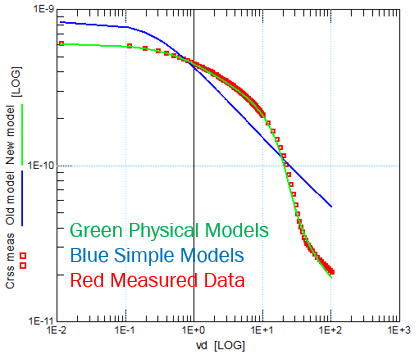Wide Band Gap materials enable a leap over current silicon based technologies. Their large band gap results in higher dielectric breakdown, enabling lower RSPs. Higher electron saturation velocities enable high frequency designs and operations. Reduced leakage currents and better thermal conductivity facilitates operations at high temperature.
ON Semiconductor provides a unique ecosystem focus around wide bandgap solutions starting with SiC diodes, SiC MOSFETs geared towards ruggedness and speed, all the way to high end IC gate drivers for SiC MOSFETs. In addition to our hardware, we also provide physical SPICE models that help designers to realize their application performance in simulation rather than costly measurements cycles.
Our predictive discrete modeling enables system level simulation where parts can be optimized for system level figures of merit, such as efficiency and not just component level figures of merit, such as RDS(on). In addition, designers can simulate with confidence operating conditions not covered in the datasheet, such as varying temperatures, bus voltages, load currents and input gate resistances for switching applications.
For all this to work, the models must be physically based, intuitive, predictive and above all, accurate.
In the IC industry, going back several decades, CAD design enablement environments with SPICE models have been critical for IC designers to accurately predict circuit performance; shortening manufacturing cycles with first time right designs. Up until present day, power electronic CAD environments have lagged far behind those of the IC industry in part due to the lack of reliable SPICE models. Power electronic device models have been based on simple sub-circuit and complex unphysical behavioral models; ultimately unreliable for simulation.
Simple sub circuits are too rudimentary to adequately capture all the device performances. In Figure 1, we show a CRSS plot comparing a typical simple model (in blue) to our more advanced physical model (in green) and measured data (in red). Clearly, you can see the simple model does not capture the nonlinear capacitive effects, ultimately leading to inaccurate dynamic switching simulation.
More accurate, complex behavioral models are well known to lead to convergence issues. Further such models are often written in proprietary simulator behavioral languages such as MAST ™ and are therefore not portable across multiple simulator platforms.
In general, power electronic models are not process technology and layout based, nor is the scalability with chip floorplan apparent.
With our physical scalable models, we develop one model that applies to the entire technology platform. That's to say it's not a library of individual models filled with empirical fitting parameters, ultimately curve fit for each product. Through our chip scaling, we can have rapid proliferation within technology by just dialing in a given products chip floorplan layout parameters.
At the next level, physics-based process dependence within the models enables us to predict the impact of new virtual technology changes. Clearly, early design helps to drive technology requirements from an application perspective and speeds up the time to market. On one hand, process and device design engineers use finite element device simulation, otherwise known as TCAD. On the other hand, application and system-level designers use SPICE based simulation environments. The process parameter based spice models help to bring these two worlds together.
Read our other blogs in this series! Part two focuses on some aspects of our silicon carbide power MOSFET model. In part three of our blog series, we discuss Wide Bandgap model verification.

